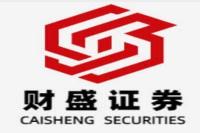中国新能源电池行业的残酷现实:领湃科技的沉浮与市场洗牌
元描述: 领湃科技案例深度剖析中国新能源电池行业残酷竞争,探讨产能过剩、价格战、技术升级等关键问题,分析行业未来趋势及中小企业生存策略,包含锂电池、储能电池、新能源汽车等关键词。
Imagine this: you're a passionate entrepreneur, pouring your heart and soul, and significant capital, into a burgeoning industry - new energy, specifically, the electric vehicle (EV) battery sector. The future seems bright, a green revolution brimming with opportunity. But the reality hits hard, much faster than anticipated. This isn't a fairy tale; this is the story of countless companies in China's fiercely competitive EV battery market, a story vividly illustrated by Lingpai Technology's recent struggles. It's a cautionary tale of aggressive expansion, unforeseen market shifts, and the brutal reality of a sector rapidly consolidating around a few dominant players. We'll delve deep into Lingpai's case, examining the contributing factors to its current predicament, analyzing the broader trends shaping the industry, and exploring the survival strategies for smaller players navigating this challenging landscape. Prepare for a rollercoaster ride through the intricacies of China's EV battery revolution, filled with unexpected twists, strategic maneuvering, and lessons learned the hard way. We'll unpack the challenges, explore the opportunities, and ultimately, offer insights into how this dynamic industry will evolve, impacting not only businesses but also the global transition to sustainable transportation. This isn't just about numbers and graphs; it's about the human drama unfolding in the heart of a technological revolution.
新能源电池行业的挑战与机遇
The Chinese EV battery market, once a land of opportunity, has quickly transformed into a battleground. The initial "battery shortage" – remember those days? – has given way to a significant overcapacity. This glut has triggered a price war, squeezing profit margins and leaving many smaller players struggling to survive. Lingpai Technology (300530.SZ), once a hopeful entrant, provides a stark example of the challenges facing companies lacking the scale and brand recognition of industry giants like CATL (宁德时代) and BYD (比亚迪).
Lingpai’s recent announcement to sell off equipment from its underperforming production line underscores the harsh reality. The sale, involving millions of yuan worth of machinery, signals a strategic retreat, a painful but necessary step to stem losses and improve its financial position. The company candidly admits that low production line utilization, high unit costs, and intense competition have crippled its profitability. This isn't just about Lingpai; it's a microcosm of the broader industry struggle.
Lingpai’s experience highlights several key challenges:
- Intense Competition: The market is dominated by CATL and BYD, leaving smaller players fighting for scraps. The sheer scale of these giants allows them to absorb losses during price wars, a luxury smaller companies don't possess.
- Rapid Technological Advancements: The EV battery sector is characterized by rapid innovation. Companies that fail to keep pace with technological advancements risk becoming obsolete quickly. Lingpai's attempt to upgrade its production line, while commendable, ultimately failed to yield the desired results.
- Overcapacity: The surge in production capacity has outstripped demand, leading to a significant drop in prices and profitability. This oversupply is a consequence of optimistic projections about the growth of the EV market, which, while still expanding, hasn't met some initial expectations.
- Cost Management: Maintaining competitive pricing while keeping production costs low is crucial. Lingpai's struggles underscore the difficulty of achieving this balance, especially for companies lacking economies of scale.
However, despite these challenges, opportunities remain:
- Focus on Niche Markets: Smaller players can carve out niches by specializing in specific battery types or applications, such as energy storage systems (ESS). Lingpai’s pivot towards energy storage is a strategic move in this direction.
- Technological Innovation: While keeping up with the giants is a challenge, smaller companies can focus on developing disruptive technologies or innovative solutions to gain a competitive edge.
- Strategic Partnerships: Collaboration with larger players or other industry stakeholders can provide access to resources and expertise.
- Government Support: Government policies aimed at promoting the development of the new energy sector can offer support and incentives to smaller companies.
锂电池价格战的残酷现实
The price war in the lithium-ion battery market is nothing short of brutal. Bloomberg New Energy Finance's report highlights a staggering 20% drop in battery pack prices in 2024, the largest year-on-year decline since 2017. This price pressure is fueled by overcapacity and intense competition, forcing manufacturers to slash prices to secure market share. This situation leaves smaller companies like Lingpai particularly vulnerable, while the industry leaders, CATL and BYD, can better withstand the pressure. This price war is a key driver behind Lingpai’s current financial difficulties.
领湃科技的转型之路
Lingpai's strategic shift towards energy storage systems represents a crucial attempt at survival. While its foray into the EV battery market proved challenging, the ESS sector offers a different landscape. The demands are different, the competition isn't as concentrated, and the profit margins might be more sustainable. This pivot highlights the importance of adaptability and strategic repositioning in a dynamic market. However, success in this new area will depend on Lingpai's ability to innovate, secure contracts, and effectively manage costs. The transition won't be easy, but it offers a fighting chance.
储能电池市场:一片蓝海?
The energy storage system (ESS) market is often viewed as a promising area for growth within the broader new energy sector. While still developing, the market is expanding rapidly, driven by the need for reliable and efficient energy storage solutions to complement renewable energy sources like solar and wind power. This growth provides an opportunity for companies like Lingpai to establish a foothold and potentially achieve profitability. However, competition in this segment is also increasing, meaning Lingpai will need to differentiate itself through innovation and strategic partnerships. The lower price point of ESS batteries (USD 45/kWh compared to USD 78/kWh for EV batteries) indicates a potentially more competitive landscape, but also a potentially higher volume market.
常见问题解答 (FAQ)
Here are some frequently asked questions about the challenges facing the Chinese EV battery industry:
Q1: Why is the EV battery market in China so competitive?
A1: The market is driven by significant government support, massive demand projections for EVs, and relatively easy access to capital. This has led to an influx of players, resulting in fierce competition and a price war.
Q2: What are the main factors contributing to Lingpai Technology's struggles?
A2: Lingpai's challenges stem from a combination of factors: intense competition from larger players, high production costs, low production line utilization, and a failure to achieve economies of scale amid rapid technological advancements.
Q3: Is the pivot towards energy storage a viable strategy for Lingpai?
A3: It's a potentially viable strategy, as the ESS market is growing rapidly. However, success will depend on Lingpai's ability to innovate, differentiate its products, and effectively manage costs in a still-competitive market.
Q4: What are the long-term prospects for smaller EV battery manufacturers in China?
A4: Smaller manufacturers face an uphill battle. Survival will likely depend on specialization, technological innovation, strategic partnerships, and a focus on niche markets. Consolidation within the industry is highly probable.
Q5: How will the price war affect the overall EV industry?
A5: The price war benefits consumers through lower EV prices. However, it squeezes profit margins for battery manufacturers, potentially hindering innovation and investment in the long run. It also increases the likelihood of industry consolidation.
Q6: What role does government policy play in this market?
A6: Government policies play a significant role, both in promoting the EV sector and in potentially shaping the competitive landscape through subsidies, regulations, and incentives.
结论
The case of Lingpai Technology serves as a stark reminder of the intense competition and challenges faced by companies in China's EV battery market. While the industry offers significant opportunities, the path to success is fraught with peril. Smaller players must be agile, innovative, and strategically focused to navigate this turbulent environment. The future will likely see continued consolidation, with the larger players gaining an even stronger foothold. However, niches remain, and those companies that can adapt and innovate will find opportunities to thrive. The race is far from over, but the rules of engagement have changed dramatically. The future of the Chinese EV battery landscape will be shaped by those who can master adaptability, technological superiority, and shrewd market strategy.



